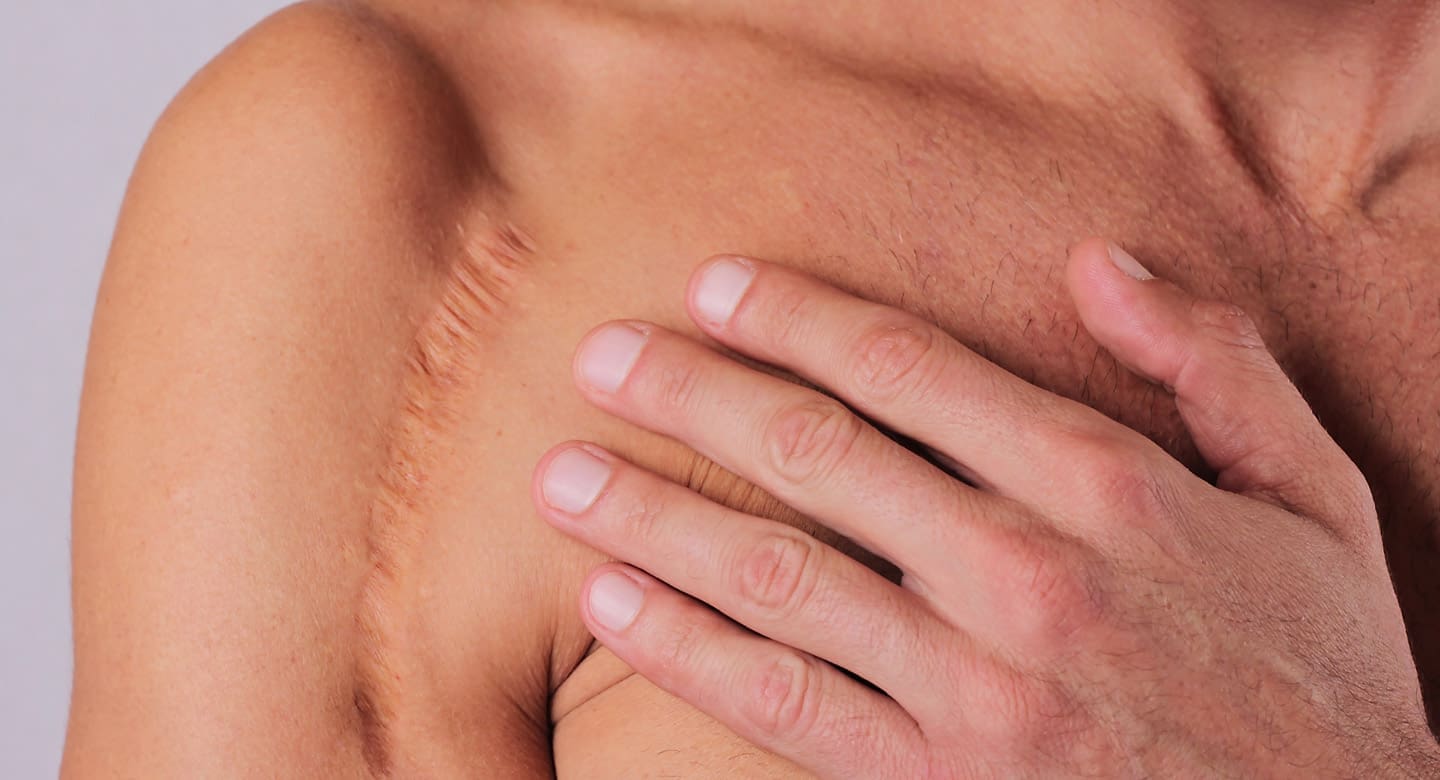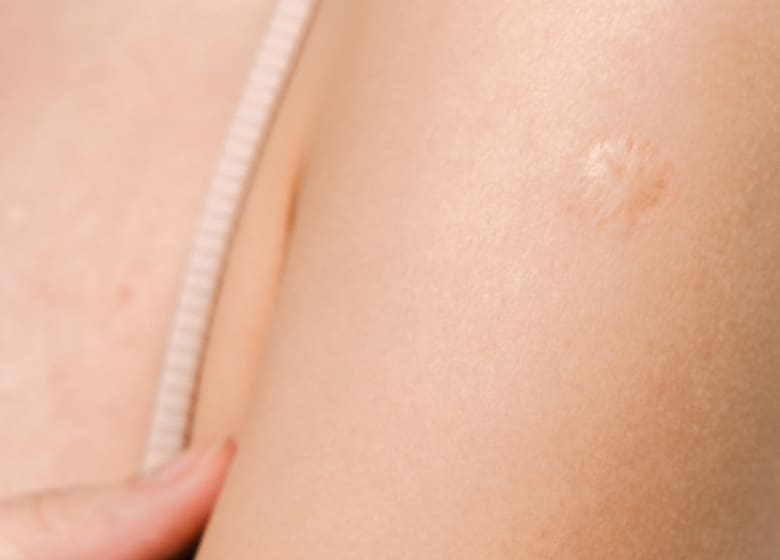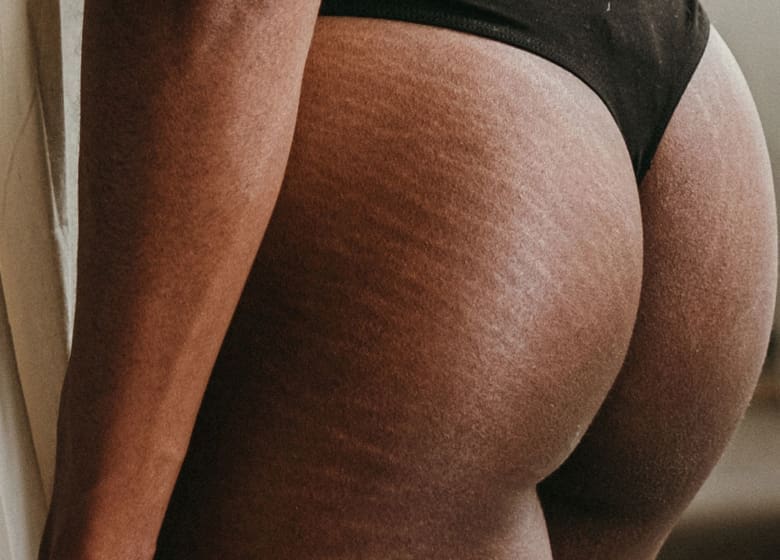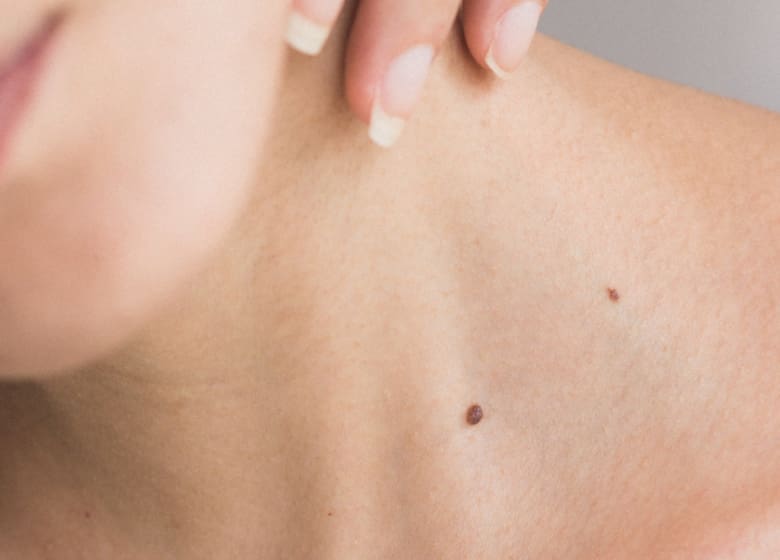Scarring occurs when the skin naturally repairs itself after damage or injury.
When the skin is torn or cut in some way the body goes into repair mode and produces collagen at the injured site to help pull the skin back together and permanently close the wound. Collagen is different from normal skin cells. It is paler in tone, and softer in texture.
Scars, including hypertrophic scars, will usually start off red or purple in colour. Within a few weeks or months the scar will become lighter in colour, eventually becoming a silvery-white.








